Should You Invest in Fine Art?
There are multiple ways to invest in fine art, from art funds and trusts to online sales and purchasing individual pieces to hang on your walls. We cover a few of the details you should know before you make the plunge.
By Kris Maksimovich, AIF®, CRPC®, CPFA®, CRC®:
The fine art market in the United States is a multi-billion-dollar industry. In 2022, a UBS/Basel Art report estimates the total value of sales in the U.S. fine art market at an estimated $30.2 billion. This represents a growth of 8% from the previous year.
Ways to invest in fine art
There are multiple ways to invest in fine art, from art funds and trusts to online sales and purchasing individual pieces to hang on your walls.
Is investing in fine art a good idea?
Whether or not you should invest in art is a personal decision that depends on your individual circumstances, budget, need for liquidity, knowledge, and experience with the art market, and tolerance for risk.
According to Artnet state-of-the-art global analysis, the largest genre for all fine art sales is impressionist and modern, followed by postwar and contemporary, old masters, and ultra-contemporary. Examples of 2022 sales include:
- Impressionist and Modern. Piet Mondrian, Vincent van Gogh, Paul Cézanne, and Pablo Picasso, Georges Seurat, and Paul Gauguin.
- Postwar and Contemporary. Andy Warhol, René Magritte, and Jean-Michel Basquiat.
- Old Masters (which includes artists born between 1250-1820). Sandro Botticelli, Chardin, and Michelangelo.
- Ultra-Contemporary (artists born after 1974). Banksy, Adrian Ghenie, Matthew Wong, Shara Hughes, and Ayako Rokkaku.
The fine art market is driven by a variety of factors:
- Market growth. The growth of the global economy has led to an increase in the number of wealthy individuals interested in investing in art. Some investors buy art as a speculative investment, hoping to make a profit by reselling it at a higher price in the future.
- Appreciation in value. Fine art has a long history of appreciating in value, making it a potentially profitable investment.
- Unique investing experience. Art can be a unique and personal investment that provides you and your family with enjoyment for years to come.
- Hedge against inflation. Often, art is seen as a hedge against inflation because its value tends to increase over time while the value of currency decreases.
What are the disadvantages of investing in fine art?
As a collectible, fine art generally increases in value as it gets older or becomes rarer. Art as an investment can be an attractive one, but it is important to be aware of the numerous risks involved.
- Art is not a liquid asset. It can be difficult to find a buyer for a piece of art, especially if it is unique or rare.
- The value of art is subjective. It is difficult to predict how much a particular piece of art will be worth in the future. The price is determined by what someone is willing to pay for it, and this can vary greatly.
- Art can be damaged or destroyed. Natural disasters, accidents, or even theft can reduce its value.
- Art can be counterfeited. There are many fake artworks in circulation, and it can be difficult to tell the difference between a real and a fake.
- Market volatility. The value of art can fluctuate wildly, making it a risky investment.
- The cost of insurance. Art insurance can be expensive and should be factored into your overall investment costs.
- The cost of storage. Art needs to be stored properly to prevent damage. This can also come at a significant cost.
Overall, the fine art market is a complex and risky investment, however, it can also be a rewarding investment for those who are willing to do their research and understand the risks involved. You should work with a reputable art dealer or appraiser to help you make informed decisions.
Fine art and estate planning considerations
When you die, your art collection may pass on to your heirs, or you may wish to donate ownership to an institution as part of your estate plan. Children may quibble over a favorite piece, or they may not care for the art at all. Also, secretly handing your collection to children is not a good idea. This type of transfer of ownership can negatively impact its provenance and drive down its value. Additionally, such a transfer could be considered tax fraud, as is undervaluing your collection. The IRS will want a detailed estimate based on professional appraisals.
Passing on a collection can be a complex and expensive process, so it is important to plan ahead and seek the advice of a professional financial advisor.
Final considerations
Ultimately, the decision of whether or not to invest in fine art is a personal one. There is no right or wrong answer, and the best decision for you will depend on your individual circumstances.
Here are some additional things to consider when investing in art:
- Only invest money that you can afford to lose. Art is a risky investment, and there is no guarantee that you will make a profit.
- Buy art that you love. This will make it more enjoyable to own and less likely that you will want to sell it quickly.
- Do your research. Learn about the artist, the artwork, and the market for art before you make a purchase.
- Buy art from reputable dealers. This will help to reduce the risk of buying a fake or damaged piece.
- Be patient. Art is a long-term investment. Don’t expect to make a quick profit.
If you are willing to take on the risks, art can be a rewarding investment. However, it is important to remember that art is not a get-rich-quick scheme. You should work with a financial advisor who can help you create an investment strategy that is right for you.
###
Kris Maksimovich is a financial advisor located at Global Wealth Advisors 4400 State Hwy 121, Ste. 200, Lewisville, TX 75056. He offers securities and advisory services as an Investment Adviser Representative of Commonwealth Financial Network®, Member FINRA/SIPC, a Registered Investment Adviser. Financial planning services offered through Global Wealth Advisors are separate and unrelated to Commonwealth. He can be reached at (972) 930-1238 or at info@gwadvisors.net.
© 2023 Global Wealth Advisors
Latest News
How to Create Stronger Passwords
September 18, 2024
Learn how to create stronger passwords to protect your online accounts and discover effective tactics for safeguarding your digital presence. Presented by Kr...
READ MORE...The Kiddie Tax
August 21, 2024
Explore the kiddie tax rules and their implications on parents' ability to transfer investment assets to their children and learn about tax planning strategies ...
READ MORE...Mastering the Art of Salary Negotiation
July 23, 2024
Improve your salary negotiation skills and boost your earning potential. Learn how to research, prepare, and confidently ask for a higher salary. Presented by ...
READ MORE...Loading...








